Pilot's Work Experience Also Raises Questions
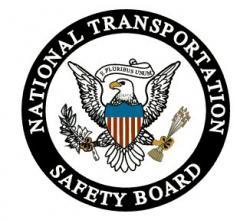 The probable cause on a
tragic EC135 medical helo crash, that killed two people, has been
published by the NTSB. While it blames CFIT as the probable cause
for the accident, there do appear to be some additional questions
raised about the pilot's background... The Night VFR occured Jan.
10, 2005, near the Woodrow Wilson Bridge. The impact killed the
pilot, Joseph Schaefer of Sterling, Virginia, and a paramedic,
Nicole Kielar of Henrico County. A Flight nurse, Jonathan Godfrey,
survived. The Probable Cause report is excerpted below...
The probable cause on a
tragic EC135 medical helo crash, that killed two people, has been
published by the NTSB. While it blames CFIT as the probable cause
for the accident, there do appear to be some additional questions
raised about the pilot's background... The Night VFR occured Jan.
10, 2005, near the Woodrow Wilson Bridge. The impact killed the
pilot, Joseph Schaefer of Sterling, Virginia, and a paramedic,
Nicole Kielar of Henrico County. A Flight nurse, Jonathan Godfrey,
survived. The Probable Cause report is excerpted below...
NTSB Identification: NYC05MA039.
14 CFR Part 91: General Aviation
Accident occurred Monday, January 10, 2005 in Oxon Hill, MD
Probable Cause Approval Date: 12/20/2007
Aircraft: Eurocopter Deutschland EC 135 P2, registration:
N136LN
Injuries: 2 Fatal, 1 Serious.
On January 10, 2005, about 2311 eastern standard time, a
Eurocopter Deutschland GmbH EC-135 P2 helicopter (file photos
below), N136LN, operated by LifeNet, Inc., as Life Evac 2, crashed
into the Potomac River during low-altitude cruise flight near Oxon
Hill, Maryland. The certificated commercial pilot and the flight
paramedic were killed, and the flight nurse received serious
injuries. The helicopter was destroyed. The positioning flight was
conducted under the provisions of 14 Code of Federal Regulations
Part 91 and visual flight rules with a company flight plan filed.
Night visual meteorological conditions prevailed at the time of the
accident.
The National Transportation Safety Board determines the
probable cause(s) of this accident as follows:
The pilot's failure to identify and arrest the helicopter's
descent, which resulted in controlled flight into terrain.
Contributing to the accident were the dark night conditions,
limited outside visual references, and the lack of an operable
radar altimeter in the helicopter.
HISTORY OF THE FLIGHT
On January 10, 2005, about 2311 eastern standard time, a
Eurocopter Deutschland GmbH EC-135 P2 helicopter, N136LN, operated
by LifeNet, Inc., as Life Evac 2, crashed into the Potomac River
during low-altitude cruise flight near Oxon Hill, Maryland. The
certificated commercial pilot and the flight paramedic were killed,
and the flight nurse received serious injuries. The helicopter was
destroyed. The positioning flight was conducted under the
provisions of 14 Code of Federal Regulations (CFR) Part 91 and
visual flight rules (VFR) with a company flight plan filed. Night
visual meteorological conditions prevailed at the time of the
accident.
The flight originated at the Washington Hospital Center Helipad
(DC08), Washington, D.C., about 2304, and was en route to Stafford
Regional Airport (RMN), Stafford, Virginia. Global positioning
system (GPS) data for the flight showed that the helicopter
proceeded toward the Federal Aviation Administration's (FAA)
published helicopter route 1. According to FAA air traffic
control (ATC) transcripts, the pilot contacted the local controller
at Ronald Reagan Washington National Airport (DCA), Washington,
D.C., at 2305:47 and stated, "washington tower life evac two . . .
sir we're at uh medstar like to go out to uh r f k route one then
to route four south." The local controller responded, "life evac
two (unintelligible) bravo airspace altimeter three zero two five."
The pilot responded, "roger understand cleared as requested."
Examination of FAA ATC radar data showed that the helicopter
intercepted a segment of published helicopter route 1, followed it
southwest to intercept helicopter route 4, and then flew southbound
along the Potomac River toward Woodrow Wilson Bridge. As the
helicopter flew over the river toward Woodrow Wilson Bridge, its
Mode C transponder reported that its altitude varied from 0 to 100
feet. When the helicopter was about 0.5 nautical mile (nm)
north of the bridge, its reported Mode C altitude was 200 feet.
At 2311:20, the pilot reported to the local controller, "life
evac two is at the Woodrow Wilson [Bridge]," and the controller
responded, "life evac two washington tower traffic on a ten mile
final is a seven [sic] an airbus." At 2311:30, the pilot
responded, "roger we have him in sight and will be out of his way,"
and the controller stated, "life evac two maintain visual
separation from traffic." ATC radar data showed that, at the time
of the pilot's response, the helicopter was about 0.25 nm north of
the Woodrow Wilson Bridge at an altitude of about 200 feet. The
pilot made no further radio communications.
According to the flight nurse, who was seated in the
helicopter's left front copilot's seat, the pilot maneuvered the
helicopter to cross the bridge midspan. The flight nurse stated
that the helicopter appeared to be at the same or higher altitude
than the lights he saw on some construction cranes near the Woodrow
Wilson Bridge. He stated that he "called the lights" on both sides
of the river to the pilot and that the pilot acknowledged him.
According to a Maryland Department of State Police report, the
flight nurse also stated that there was a "commercial airplane
coming into [DCA], and the pilot . . . made a change in his
flightpath and started to descend."
According to ATC radar data, at 2311:39, the helicopter had
crossed over the Woodrow Wilson Bridge and was just south of the
bridge with a ground track of about 180 degrees and an altitude of
about 200 feet. Four seconds later, the helicopter had a ground
track of about 190 degrees and an altitude of about 100 feet. The
helicopter's last recorded position at 2311:48 showed a ground
track of about 200 degrees and an altitude of about 0 feet.
According to ATC radar data, at the time of the helicopter's last
radar return, the northbound Airbus that the local controller
previously mentioned was about 2.2 nm south of the helicopter's
position at an altitude of about 1,700 feet.
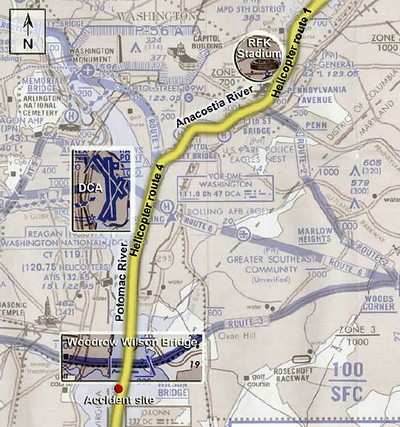
According to the flight nurse, after the helicopter flew over
the southern half of the Woodrow Wilson Bridge, the next thing he
recalled was being submerged in water with his seatbelt on and his
helmet off. He stated that the helicopter's master caution lights
and panel segment lights did not illuminate and that he did not
hear any audio alarms sound before the crash. He stated that the
pilot did not execute any evasive maneuvers or communicate any
difficulties, either verbally or nonverbally.
According to witnesses in vehicles on the Woodrow Wilson Bridge,
the helicopter crossed over the bridge before it descended and then
impacted the water. None of the witnesses reported seeing the
helicopter impact any objects before its descent. The wreckage was
located in the Potomac River about 0.5 nm south of the Woodrow
Wilson Bridge.
At 2314:46 (about 3 minutes after the helicopter crashed), the
DCA local controller stated, "life evac two frequency change
approved." The controller received no reply and made no further
attempts to contact the flight. The Maryland State Police later
notified the controller of the crash.
PILOT INFORMATION
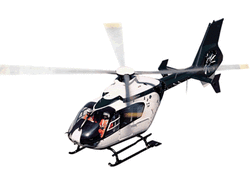 The pilot, age 56, was
hired by LifeNet in June 2004. He held a commercial pilot
certificate with ratings for airplane single- and multi-engine
land, rotorcraft helicopter, and instrument helicopter. His most
recent FAA second-class airman medical certificate was issued on
May 28, 2004. On his application for the medical certificate, he
reported 1,500 hours total civilian flight experience, 30 hours of
which were accumulated in the previous 6 months. A review of
company records showed that, in the 90 days, 30 days, and 24 hours
before the accident, the pilot flew 42 hours, 12 hours, and 1 hour,
respectively, and performed a total of 71 night landings.
The pilot, age 56, was
hired by LifeNet in June 2004. He held a commercial pilot
certificate with ratings for airplane single- and multi-engine
land, rotorcraft helicopter, and instrument helicopter. His most
recent FAA second-class airman medical certificate was issued on
May 28, 2004. On his application for the medical certificate, he
reported 1,500 hours total civilian flight experience, 30 hours of
which were accumulated in the previous 6 months. A review of
company records showed that, in the 90 days, 30 days, and 24 hours
before the accident, the pilot flew 42 hours, 12 hours, and 1 hour,
respectively, and performed a total of 71 night landings.
According to LifeNet's training records, during the pilot's
first few weeks of employment, the company provided 12 hours of
basic indoctrination training, as well as 20 hours of initial
ground training and 7.8 hours of flight training in the
Messchersmitt Bolkal Blohm BK-117 helicopter. The training records
indicated that the pilot completed the initial pilot-testing
requirements of 14 CFR 135.293 and the pilot-in-command flight
check required by 14 CFR 135.299 on July 8, 2004, in the BK-117.
The company subsequently provided the pilot 18 hours of transition
ground training and 5.8 hours of transition flight training for the
EC-135, and the pilot completed the initial testing and
flight-check requirements in the EC-135 on October 3, 2004.
During his employment with LifeNet, the pilot accumulated 51.5
flight hours in the BK-117 and 40.8 flight hours in the EC-135.
According to LifeNet's assistant chief pilot, when the pilot
applied for employment, he reported that he had been retired since
1997 but that he was current for Part 135 operations and had passed
Part 135 flight checks in a Bell 206 helicopter in February 2004
and in a BK-117 in April 2004. The assistant chief pilot stated
that, according to the pilot's interview and resume, he had been a
military pilot in the U.S. Army from 1968 to 1971 and had
accumulated about 2,400 military flight hours in helicopters,
including about 350 hours of night flying and about 70 hours of
instrument flying. From 1971 to his retirement in 1997, the pilot
worked for a corporation in both nonflying and flying positions.
During his 26-year corporate employment, the pilot accumulated 400
hours total flight experience in Agusta 109 and Sikorsky S76
helicopters and about 300 total civilian flight hours in fixed-wing
airplanes.
The resume that the pilot submitted to LifeNet did not list his
most recent employer, which was another Part 135 helicopter
operator that had terminated his employment after about 2 weeks.
According to the chief pilot for that company, the accident pilot
was hired on April 12, 2004, but the company terminated his
employment on April 28, 2004, because the pilot was unable to
adequately perform complex tasks in the helicopter or fly a
"complete mission" involving several tasks in a series. During
his training with this operator, the pilot accumulated about 7
hours of flight time in a BK-117.
Two medical crewmembers who flew with the pilot the night before
the accident on the same route as the accident flight and on other
previous flights stated that the pilot flew the helicopter in a
manner equivalent to other pilots in the company.
HELICOPTER INFORMATION
The helicopter was manufactured in 2004 and was equipped with
two Pratt & Whitney Canada PW206B-series turboshaft engines.
The helicopter was configured with a front right pilot seat, a
front left copilot's seat, an aft-facing passenger seat in the left
aft cabin, and an area for one medical patient in the aft cabin.
Each seat was equipped with lap belt and shoulder harness
restraints.
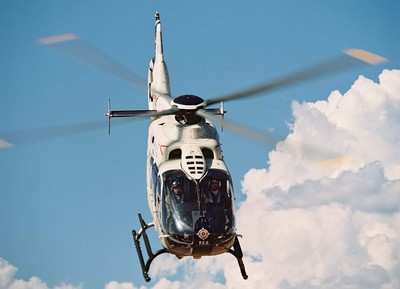
The helicopter was maintained in accordance with an FAA-approved
aircraft inspection program. According to maintenance records, the
most recent 50-hour inspection was performed on December 17, 2004.
The most recent 100-hour inspection was performed on November 23,
2004, at an airframe total time of 94.5 hours. At the time of the
accident, the helicopter had accumulated 166.6 total hours.
The maintenance logbook recovered from the helicopter included
an entry dated January 10, 2005, for an inoperative radar
altimeter. The maintenance log also contained a "Record of
Minimum Equipment List (MEL) Items and Deferred Maintenance"
section that included an entry stating that the inoperative radar
altimeter could be deferred for maintenance until January 20,
2005.
METEOROLOGICAL INFORMATION
According to the DCA automated surface observing system, located
about 3.5 nm north of the accident site, the reported conditions at
2251 were winds calm, visibility 10 statute miles, broken clouds at
13,000 feet and 20,000 feet, temperature 45 degrees Fahrenheit (F),
dew point 36 degrees F, and altimeter setting 30.25 inches of
mercury.
According to recorded astronomical data, at the time and
location of the accident, a new moon was below the horizon and
provided no illumination.
WRECKAGE AND IMPACT INFORMATION
The helicopter was recovered from about 5 feet of water in the
Potomac River. Wreckage was scattered along a north-south oriented
debris path. The wreckage was recovered, and examination indicated
no evidence of a collision with a bird or other object, fatigue
fractures, or other anomalies.
The main fuselage section was separated into the lower cockpit
area and upper cockpit area. The lower cockpit area included the
flight-crew floorboard section, antitorque pedals, the forward skid
frame, and fragments of the fuel tank. The upper cockpit area
included the flight-control tubes, the center electrical and
flight-control structure, the upper flight-control deck, engines,
the main transmission, and the rotor head.
The cyclic, collective, and antitorque control systems were
damaged, and portions of some push-pull tubes were separated and
not recovered. Continuity could not be established because of the
separations; however, the separated surfaces showed fracture
features consistent with impact-related overload.
The main rotor mast was in place and intact in the main
transmission. The root ends of the four main rotor blades remained
attached to the main rotor hub on the mast. Three of the four
pitch-change links were connected to their two attach points, and
the other pitch-change link was fractured in the middle. The
fracture surfaces were consistent with compression-bending
overload.
Portions of all four main rotor-blade tips were recovered. Each
main rotor blade had overload fractures and chordwise scoring on
the lower blade skin between 6 to 12 inches from the blade hub.
Each blade also showed fractures along the blade span, consistent
with impact damage. The main transmission remained attached to the
center section of the upper airframe structure, and all four
mounting points were intact. The main transmission turned freely,
no chips were found on the detectors, and the transmission appeared
intact and functional.
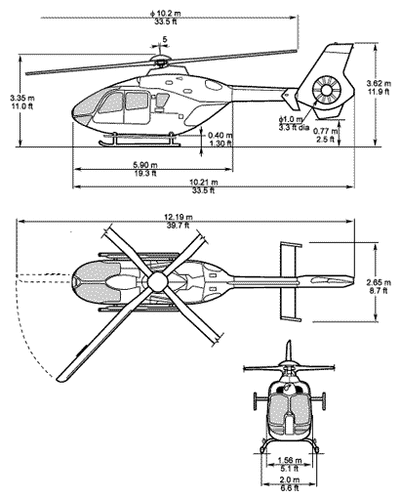
The tail boom was separated at the aft fuselage frame. The tail
section included the complete fenestron assembly with the tail
rotor gearbox and tail rotor. The tail rotor driveshaft was
displaced forward about 1.5 inches. The aft portion of the
driveshaft, which was carbon composite, was found fractured,
torsionally cracked, and deformed. All tail rotor blades remained
complete and attached to the hub. The fenestron shroud around the
tail rotor showed a rotational scrape at the 5 o'clock position.
The width of the scrape corresponded with the tail rotor-blade
width.
Both engines showed little damage, and the gas generator (N1
compressor and turbine) and power turbine (N2 turbine) for each
engine rotated freely. Nonvolatile memory data extracted from the
electronic engine control units for each engine revealed no
evidence of preimpact faults.
MEDICAL AND PATHOLOGICAL INFORMATION
The FAA Bioaeronautical Sciences Research Laboratory, Oklahoma
City, Oklahoma, performed toxicological testing on specimens from
the pilot, and no drugs or alcohol were detected in the pilot's
blood or urine.
SURVIVAL ASPECTS
The State of Maryland, Office of the Chief Medical Examiner,
performed autopsies on the pilot and the flight paramedic. The
medical examiner determined that the pilot's cause of death was
"multiple injuries." The flight paramedic's cause of death was
listed as "drowning complicated by hypothermia"; the paramedic
was found still belted into the left aft cabin seat.
According to the flight nurse, after the crash, he was submerged
in water but was able to remove his seat restraints, exit the
helicopter, and remain near the helicopter's partially submerged
tail section until a rescue boat arrived. He was taken to a
hospital and treated for a broken arm and burns.
Several of the witnesses who saw the helicopter impact the water
telephoned 911 to report the crash. According to the DCA tower's
daily record of operation, the DCA controller received a call about
2326 from a Maryland State Police helicopter crew advising that
they were inbound to investigate reports of a downed aircraft near
the Woodrow Wilson Bridge. According to an incident report from the
City of Alexandria (Virginia) Fire Department, Station 201, the
station was notified about the downed aircraft at 2330:18 and
dispatched the first of nine emergency medical service apparatuses
about 2331:12; the first boat was dispatched at 2333:09.
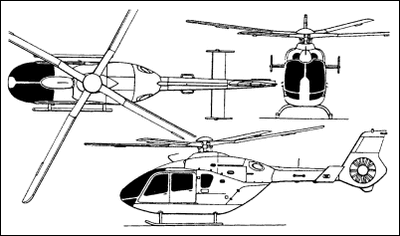
ORGANIZATIONAL AND MANAGEMENT INFORMATION
LifeNet's Part 135 certificate was issued in 1995. LifeNet is
headquartered in Chesterfield, Missouri, and has 89 aircraft based
at various locations across the country. LifeNet's fleet includes
various AS-350, BK-117, and EC-135 series helicopters, various
models of Bell helicopters, Eurocopter BO-105 helicopters,
McDonnell Douglas MDHS-MD-900 helicopters, and Beech BE-100 and
BE-200 twin-engine turboprop airplanes. LifeNet employs pilots and
medical personnel.
TESTS AND RESEARCH
A National Transportation Safety Board performance engineer
completed a performance study using the last 30 seconds of the
flight's Mode C radar data and the location of the crash site to
estimate the helicopter's bank angle and flightpath descent angle
at impact, as well as the time of the crash. The study estimated
that the helicopter's flightpath angle was about -3 degrees, its
bank angle was about 12 degrees right, and it impacted the water
about 3.5 seconds after the last radar return.
The study also used primary and Mode C radar data to examine the
helicopter's proximity to other aircraft and to evaluate any
possible encounter with wake turbulence or a bird
flock. Review of the Mode C radar data showed that a
70-passenger Canadair Regional Jet 700 (CRJ-700) passed northbound
over Woodrow Wilson Bridge about 1 minute 45 seconds before the
helicopter passed over the bridge. According to the data, the
helicopter passed 900 feet directly beneath the flightpath of the
CRJ-700. On the basis of the radar data, weather information, and
information obtained through consultation with an FAA wake
turbulence specialist, the study concluded that the time frame was
sufficient to expect that the jet's wake would be completely
decayed before it could reach the helicopter and that, even if the
wake had not decayed at all, its descent rate would not have been
sufficient for it to have reached the helicopter.
Review of the primary radar data showed that an area of primary
returns, which could possibly represent a bird flock, occurred
north of the bridge about 1 nm north of the point where the
helicopter began its descent and about 30 seconds before the
beginning of descent. The data showed that the helicopter's
flightpath continued undisturbed beyond the location of the primary
returns, which is not consistent with a sudden or catastrophic
collision with a bird flock. No evidence of bird remains was
observed in the area surrounding the accident site.
Construction Crane Information
During interviews, the flight nurse stated that, although he did
not remember the helicopter striking anything, he thought that it
must have struck an unlighted construction crane. Safety Board
investigators used the recorded ATC radar data and data from the
operator's GPS to examine sites along the Potomac River. The
helicopter's projected ground track along the data points toward
the accident site was at least 300 feet laterally from the nearest
construction crane, and no additional obstacles were observed along
the track. Examination of the five construction cranes closest to
the flightpath showed no evidence of an aircraft strike or
structural damage, and all of the cranes had the required lighting
on top of their respective boom. Also, a Maryland Department of
Transportation traffic surveillance camera located on the east side
of the Potomac River at Woodrow Wilson Bridge captured video that
showed, at the time of the accident, an aircraft overflew the
bridge, passing above and beyond the construction cranes, then
began to descend.
Comparison of Accident Flight with Previous Flight on the Same
Route
The pilot had flown the route from DC08 to RMN the night before
the accident. A review of the operator's GPS data revealed that the
previous flight's ground track and altitudes were nearly identical
to those of the accident flight while north of Woodrow Wilson
Bridge and up to the point of crossing the bridge midspan at an
altitude of about 200 feet. According to the data, after the
helicopter crossed the bridge on the previous night's flight, it
continued southbound on a steady ground-track heading and at an
altitude of about 200 feet until it was at least 3 nm south of the
bridge, then it climbed. The data showed that the accident flight
also crossed the bridge midspan at an altitude of about 200 feet;
however, its heading then deviated to the right while it descended
into the water.
ADDITIONAL INFORMATION
Night Flying and Featureless Terrain Considerations
Several professional helicopter pilots who routinely fly along
the Potomac River in the vicinity of the Woodrow Wilson Bridge were
interviewed regarding their observations of physical lighting and
the natural horizon of the shoreline. All of the pilots reported
that the river widens south of the bridge and that the area becomes
"very dark" because the parks and natural bird habitats there limit
the physical lighting on the shoreline.
One helicopter pilot reported the following in a written
statement: "Flying at night from North to South over the Woodrow
Wilson Bridge is very similar to going into actual instrument
conditions. A pilot [flying] low-level North of the bridge is
typically flying VFR due to the intense amount of ground lights
available along the river. Once the pilot crosses the bridge he is
now flying into a black void. At this point an instrument scan must
be established to maintain altitude. Because of the close proximity
to water . . . a radar altimeter is necessary to ensure altitude
awareness."
According to the FAA Aeronautical Information Manual
(AIM), chapter 8-1-5, Illusions in Flight, Featureless Terrain
Illusion, "An absence of ground features, as when landing over
water, darkened areas, and terrain made featureless by snow, can
create the illusion that the aircraft is at a higher altitude than
it actually is."
The FAA Airplane Flying Handbook chapter 10, states the
following about night flying: "Night flying requires that pilots be
aware of, and operate within, their abilities and limitations. . .
. Night flying is very different from day flying and demands more
attention of the pilot. The most noticeable difference is the
limited availability of outside visual references. Therefore,
flight instruments should be used to a greater degree."
 ANN's Daily Aero-Linx (05.06.25)
ANN's Daily Aero-Linx (05.06.25) ANN's Daily Aero-Term (05.06.25): Ultrahigh Frequency (UHF)
ANN's Daily Aero-Term (05.06.25): Ultrahigh Frequency (UHF) ANN FAQ: Q&A 101
ANN FAQ: Q&A 101 Classic Aero-TV: Virtual Reality Painting--PPG Leverages Technology for Training
Classic Aero-TV: Virtual Reality Painting--PPG Leverages Technology for Training Airborne 05.02.25: Joby Crewed Milestone, Diamond Club, Canadian Pilot Insurance
Airborne 05.02.25: Joby Crewed Milestone, Diamond Club, Canadian Pilot Insurance








